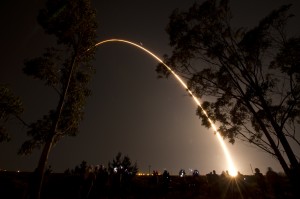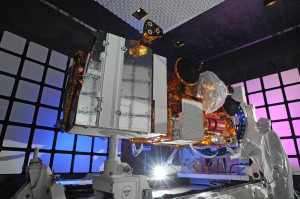At 9:48 GMT on October 28th, the National Polar Operational Environmental Satellite System Preparatory Project (NPP) satellite was successfully launched atop a Delta II rocket from Vandenberg Air Force Base into a polar orbit, circling the Earth at an altitude of 824km. With a cost of 1.5 billion US dollars, the NPP is expected to have an operational lifetime of at least 5 years, until 2016. Also launched with the NPP were six 10-cmcubesat designed by students as part of NASA’s Educational Launch of Nanosatellites program.
The NPP is the first platform to offer information to be used for both short-term weather forecasting and long-term climate modeling. The 2041-kg satellite will measure over 30 climate variables, including land and sea surface temperatures, global ice coverage, atmospheric ozone levels, and vegetative productivity, and will download more than 4 terabytes of data per day. Furthermore, it will assist in monitoring natural disasters including volcanic activity, fires, and floods. According to Andrew Carson, the program executive for NPP, it will “become a significant part of [the United States’] climate and weather monitoring system”.
The NPP is a part of the ongoing US Earth Observation System (EOS), which includes past missions Terra, Aqua, and Aura. It will serve as a precursor mission to the Joint Polar Satellite Program (JPSS), operated by NASA and the National Oceanic and Atmospheric Administration (NOAA), and will test a suite of 5 instruments for next-generation Earth observation satellites. Two of such satellites, JPSS-1 and JPSS-2, are expected to be launched in 2014 and 2019 respectively. The JPSS program is the civilian component of the joint military-civilian National Polar Operational Environmental Satellite System (NPOESS) program, which was cancelled in 2010 and split into its respective halves due to rising costs and delays.



















































































































![A trajectory analysis that used a computational fluid dynamics approach to determine the likely position and velocity histories of the foam (Credits: NASA Ref [1] p61).](http://www.spacesafetymagazine.com/wp-content/uploads/2014/05/fluid-dynamics-trajectory-analysis-50x50.jpg)



Leave a Reply